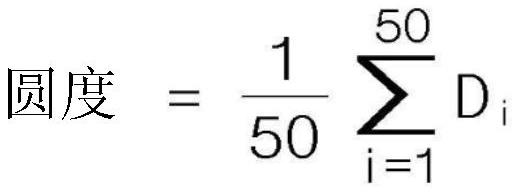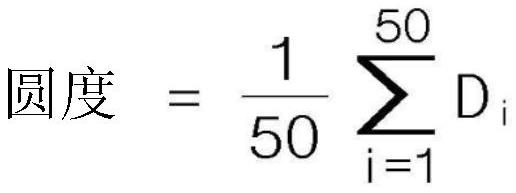Diene-based rubber latex, manufacturing method thereof, and core-shell structured graft copolymer comprising same
A diene rubber and latex technology, applied in the field of graft copolymers, can solve the problems of economy and time loss, reduce latex temperature, long reaction time, etc., achieve excellent tensile strength and melt flow index, and improve impact strength. and gloss, the effect of small solid coagulum parts
- Summary
- Abstract
- Description
- Claims
- Application Information
AI Technical Summary
Problems solved by technology
Method used
Image
Examples
preparation example Construction
[0062] In addition, the present invention provides a method for preparing the diene rubber latex.
[0063] The preparation method according to one embodiment of the present invention is characterized in that it includes: performing the first polymerization of the first conjugated diene monomer in the presence of an emulsifier and a fat-soluble polymerization initiator to prepare a polymerization conversion rate of 30%. to 40% of the first polymerization reactant (step a); injecting a water-soluble polymerization initiator into said first polymerization reactant, and increasing the temperature to prepare a second polymerization reaction having a polymerization conversion rate of 60% to 70% A reactant (step b); injecting a second conjugated diene-based monomer into said second polymerized reactant, and performing a third polymerization to prepare a third polymerized reactant having a polymerization conversion rate of 85% to 93% (step c); and injecting polymer aggregates with an ...
preparation Embodiment 1
[0104] Into the polymerization reactor (autoclave) that nitrogen replaces, inject the ion-exchanged water of 62 weight parts, the dioctyl sodium sulfosuccinate of 0.06 weight part, the ethyl acrylate of 30 weight parts, the methyl acrylate of 1 weight part Acrylic acid, 0.15 parts by weight of ethylene glycol dimethacrylate, 0.15 parts by weight of tert-dodecyl mercaptan (TDDM), and 0.3 parts by weight of potassium persulfate were used for emulsion polymerization at 70°C. During the polymerization, when the polymerization conversion rate reached 90%, 62 parts by weight of butyl acrylate, 7 parts by weight of methacrylamide and 0.3 parts by weight of tert-dodecyl mercaptan were mixed and heated for 4 hours. It was injected at a constant rate, and at the same time, respectively, 1.3 parts by weight of potassium persulfate and 0.06 parts by weight of dioctyl sodium sulfosuccinate were injected at a constant rate over 5 hours, and emulsion polymerization was performed at 70°C. The...
preparation Embodiment 2
[0106] Into the polymerization reactor (autoclave) of nitrogen replacement, inject the ion-exchanged water of 62 parts by weight, the dioctyl sodium sulfosuccinate of 0.05 parts by weight, the ethyl acrylate of 30 parts by weight, the methyl acrylate of 1 part by weight Acrylic acid, 0.15 parts by weight of ethylene glycol dimethacrylate, 0.15 parts by weight of tert-dodecyl mercaptan (TDDM), and 0.3 parts by weight of potassium persulfate were used for emulsion polymerization at 70°C. During the polymerization, when the polymerization conversion rate reached 90%, 62 parts by weight of butyl acrylate, 7 parts by weight of methacrylamide and 0.3 parts by weight of tert-dodecyl mercaptan were mixed and heated for 4 hours. It was injected at a constant rate, and at the same time, respectively, 1.3 parts by weight of potassium persulfate and 0.06 parts by weight of dioctyl sodium sulfosuccinate were injected at a constant rate over 5 hours, and emulsion polymerization was performed...
PUM
| Property | Measurement | Unit |
|---|---|---|
| diameter | aaaaa | aaaaa |
| diameter | aaaaa | aaaaa |
| diameter | aaaaa | aaaaa |
Abstract
Description
Claims
Application Information
 Login to View More
Login to View More - R&D
- Intellectual Property
- Life Sciences
- Materials
- Tech Scout
- Unparalleled Data Quality
- Higher Quality Content
- 60% Fewer Hallucinations
Browse by: Latest US Patents, China's latest patents, Technical Efficacy Thesaurus, Application Domain, Technology Topic, Popular Technical Reports.
© 2025 PatSnap. All rights reserved.Legal|Privacy policy|Modern Slavery Act Transparency Statement|Sitemap|About US| Contact US: help@patsnap.com



